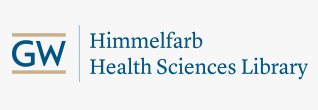Recombinant Human Insulin-Like Growth Factor-1 Treatment of Severe Growth Failure in Three Siblings with STAT5B Deficiency
Document Type
Journal Article
Publication Date
8-16-2023
Journal
Hormone research in paediatrics
DOI
10.1159/000531491
Keywords
Growth failure; Growth hormone insensitivity; Recombinant human IGF-1; STAT5B
Abstract
INTRODUCTION: Patients with homozygous recessive mutations in STAT5B have severe progressive postnatal growth failure and insulin-like growth factor-I (IGF-I) deficiency associated with immunodeficiency and increased risk of autoimmune and pulmonary conditions. This report describes the efficacy and safety of recombinant human IGF-1 (rhIGF-1) in treating severe growth failure due to STAT5B deficiency. CASE PRESENTATION: Three siblings (P1, 4.4 year-old female; P2, 2.3 year-old male; and P3, 7 month-old female) with severe short stature (height SDS [HtSDS] -6.5, -4.9, -5.3, respectively) were referred to the Center for Growth Disorders at Cincinnati Children's Hospital Medical Center. All three had a homozygous mutation (p.Trp631*) in STAT5B. Baseline IGF-I was 14.7, 14.1, and 10.8 ng/mL, respectively (all < -2.5 SDS for age and sex), and IGFBP-3 was 796, 603, and 475 ng/mL, respectively (all < -3 SDS for age and sex). The siblings were started on rhIGF-1 at 40 μg/kg/dose twice daily subcutaneously (SQ), gradually increased to 110-120 μg/kg/dose SQ twice daily as tolerated. HtSDS and height velocity (HV) were monitored over time. RESULTS: Six years of growth data was utilized to quantify growth response in the two older siblings and 5 years of data in the youngest. Pre-treatment HVs were, respectively, 3.0 (P1), 3.0 (P2), and 5.2 (P3) cm/year. With rhIGF-1 therapy, HVs increased to 5.2-6.0, 4.8-7.1, and 5.5-7.4 cm/year, respectively, in the first 3 years of treatment, before they decreased to 4.7, 3.8, and 4.3 cm/year, respectively, at a COVID-19 pandemic delayed follow-up visit and with decreased treatment adherence. ΔHtSDS for P1 and P2 was +2.21 and +0.93, respectively, over 6 years, but -0.62 for P3 after 5 years and in the setting of severe local lipohypertrophy and suboptimal weight gain. P3 also experienced hypoglycemia that limited our ability to maintain target rhIGF-1 dosing. CONCLUSION: The response to rhIGF-1 therapy is less than observed with rhIGF-1 therapy for patients previously described with severe primary IGF-I deficiency, including patients with documented defects in the growth hormone receptor, but may still provide patients with STAT5B deficiency with an opportunity to prevent worsening growth failure.
APA Citation
Muthuvel, Gajanthan; Al Remeithi, Sareea Salem; Foley, Corinne; Dauber, Andrew; Hwa, Vivian; and Backeljauw, Philippe, "Recombinant Human Insulin-Like Growth Factor-1 Treatment of Severe Growth Failure in Three Siblings with STAT5B Deficiency" (2023). GW Authored Works. Paper 3243.
https://hsrc.himmelfarb.gwu.edu/gwhpubs/3243
Department
Pediatrics

